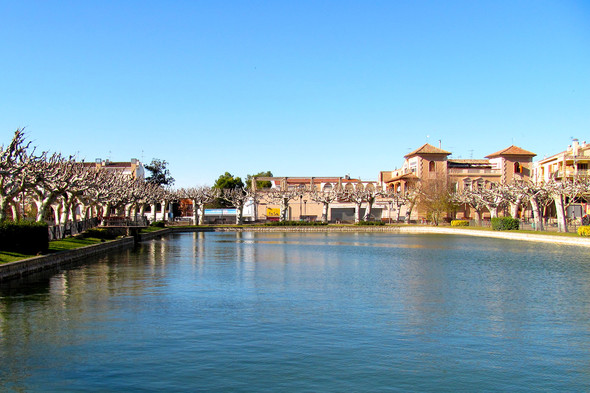Les Garrigues is a little known area in the Catalonian province of Lleida, bordered by more famous neighbours such as Priorat and Montsant. It is an arid area rich in such agricultural products that can survive in such semi-desert terrain, e.g. olives, cereal, almonds, and increasingly wine. The River Set runs through the region, but is dry most of the year. The county town is Les Borges Blanques, which boasts natural sources of water, hence its early settlement. These names may sound more French than Spanish, but we are in the heart of Catalonia here and Catalan is the language of choice, indeed one of the winemakers commented that speaking Spanish ‘hurt his tongue’.
This is olive oil territory and many of the houses in the town formerly had their own small olive oil press. The landscape is characterised by olive and almond trees. The olive variety of choice is the local Arbequina, a small round olive with firm flesh that produces mild fruity oils with low acidity, considered to be the best by experts. The quality of their extra virgin oils is also demonstrated by the number of mills in the county, 30 for 24 settlements; Les Borges alone has three, so truly artisan production! Apparently in Andalusia they produce the same quantity of oil from just one mill. In the past, the area also produced saffron, which they are now trying to reintroduce, as well as other forms of income such as craft beer, chestnuts and the production of solar energy.
The area has an ageing population of only 24,000 inhabitants and in the southern part, it’s like going back in time with ancient castles and serene, peaceful villages with narrow winding streets and traditional dry stone buildings. We took a walk around one and only encountered one other living soul, although that was perhaps because of the cold! Stone also plays an important area in the region with huts with arched roofs, walls and field boundaries constructed from dry stone, i.e. no cement used to stick the blocks together.
The high diurnal range due to the altitude and the poor soil also make Les Garrigues ideal for wine production and this is gathering pace here, with the past decade or so seeing the establishment of a number of small boutique wineries, producing wines under DO Costers del Segre.
Torres owns a vineyard here, named Purgatori, where it produces just one wine of the same name in an old farmhouse built in 1780 by the Montserrat monks, so named as this was where they banished the ‘naughty monks’ to work the olives and vines – Purgatory on earth. In addition, there are six family wineries in the region. We visited four of them but tasted the wines of all six at the various abundant meals during our stay and at the olive oil fair.
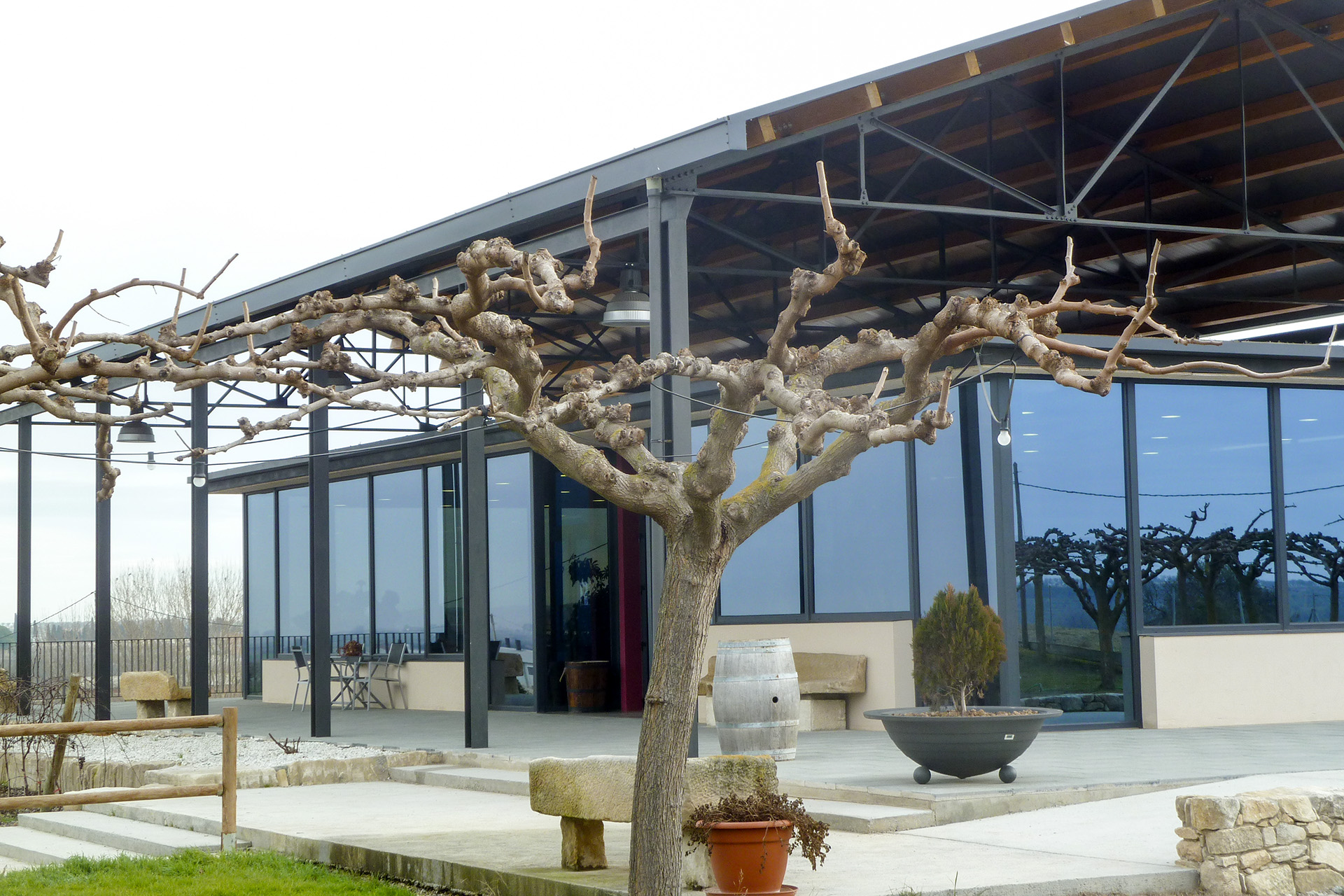
Vinya els Vilars
Our first visit was to Vinya els Vilars near the village of Arbeca, from which the olive Arbequina gets its name. The winery is named after the nearby Iberian fortress. We were greeted by the friendly owners Antoni and Maria José who started the winery project in 2002. They produce five red wines based on Merlot and Syrah, a cava, a still Macabeo, a fresh rosé from Syrah and, of course, olive oil. They also have plantings of Tannat and Touriga Nacional which they want to experiment with for blends; Antoni likes to experiment. They produce artisan wine, for which everything is done by hand.
There are lots of artists in the village, so they also use the cellar as an exhibition space for local artists, many of whom work in the winery. Antoni reflects that he has visited places like Tuscany and Argentina; it’s just as beautiful here, why don’t people come here? He wants to sell the place, not only the wine, so that people come to visit. We tasted four of the wines, including the unusual Nena 2014, a darker than normal rosé, reminiscent of a Hungarian siller. A fruity treat with flavours of strawberry, raspberry, cherry and a slight herbal note. A fresh wine perfect for summer sipping.
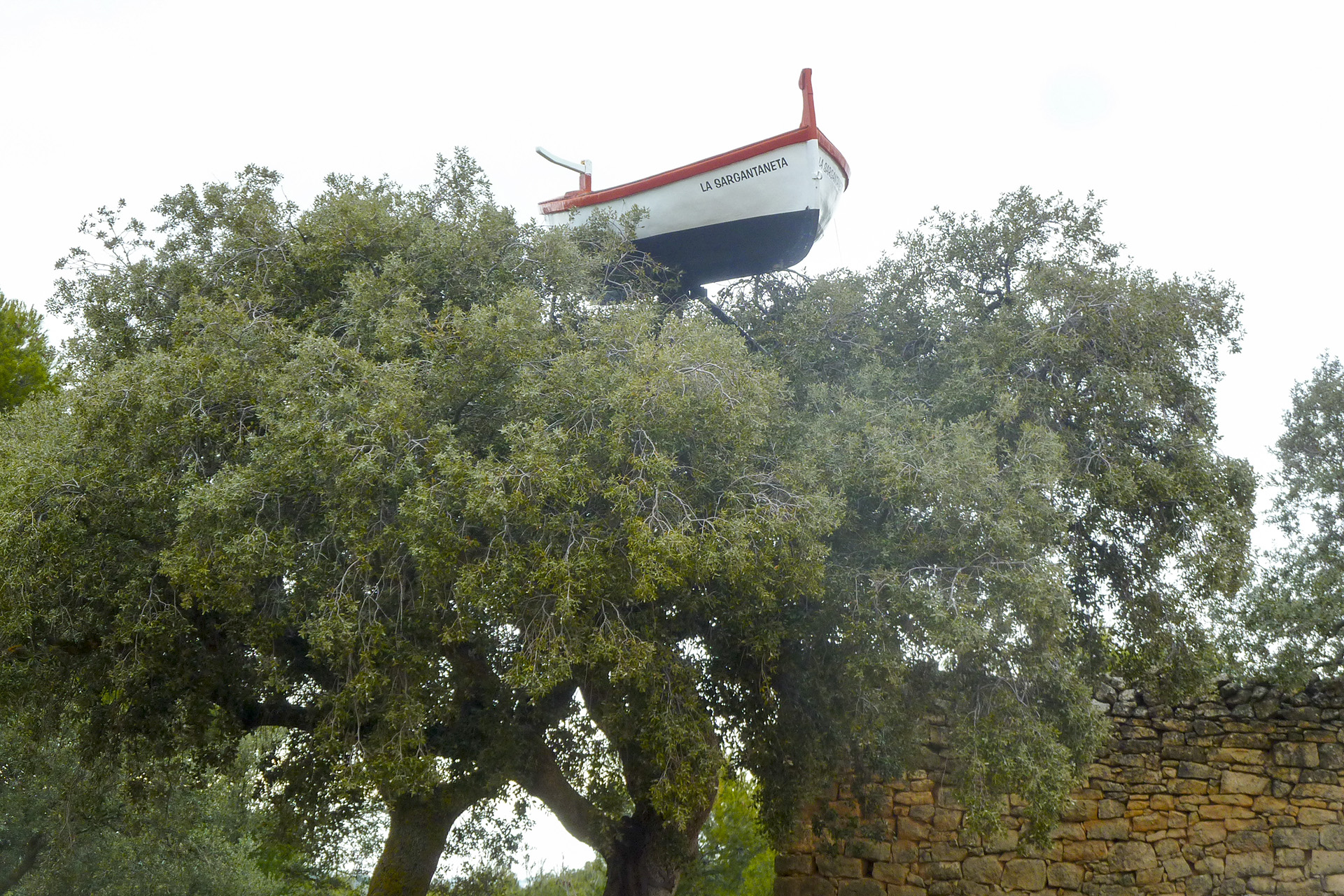
Mas Blanch i Jové
We were met by three generations of the Jové family, which boasts a Sara in each. The ‘middle’ Sara took us on a tour of the stony vineyards, the ‘Artists’ vineyard’, surrounded by olive and almond trees and forest. A true family vineyard, she explains, they did everything themselves at the beginning, although they now have an oenologist. The project was dreamt up by family friend Josep Guinovart, who sadly died before he saw it come to fruition. It mixes sculpture (art) and wine (nature). Each year they hold an event in the middle of the vineyard and invite a different artist, who leaves behind a different sculpture: a giant upside down A, a fishing boat stranded in the top of a tree, a huge Perspex vine, a ladder climbing up one of the olive trees... Each allows you to see the world through a different perspective. The winery and barrel room are also not lacking in art.
Officially certified as organic since the 2014 harvest, they have plantings of White Garnacha, Macabeo, Viognier, Garnacha, Cabernet, Merlot and Syrah as well as two rows of Pinot Grigio and Riesling at the highest altitude as a kind of experiment. Their wines are called Saó as they speak of the earth; this means maturity, perfection and optimal humidity in Catalan. The winery itself also seeks to be in harmony with the surrounding landscape. Along with a hearty lunch of two different stews and a selection of local desserts we were treated to two vertical tastings of white and red Saó. The red a blend of Tempranillo, Garnacha and Cabernet Sauvignon, the white Macabeo. The Saó Blanc 2007 was a delightful honey, apple, quince and peach concoction, spiced up with some vanilla and cinnamon.
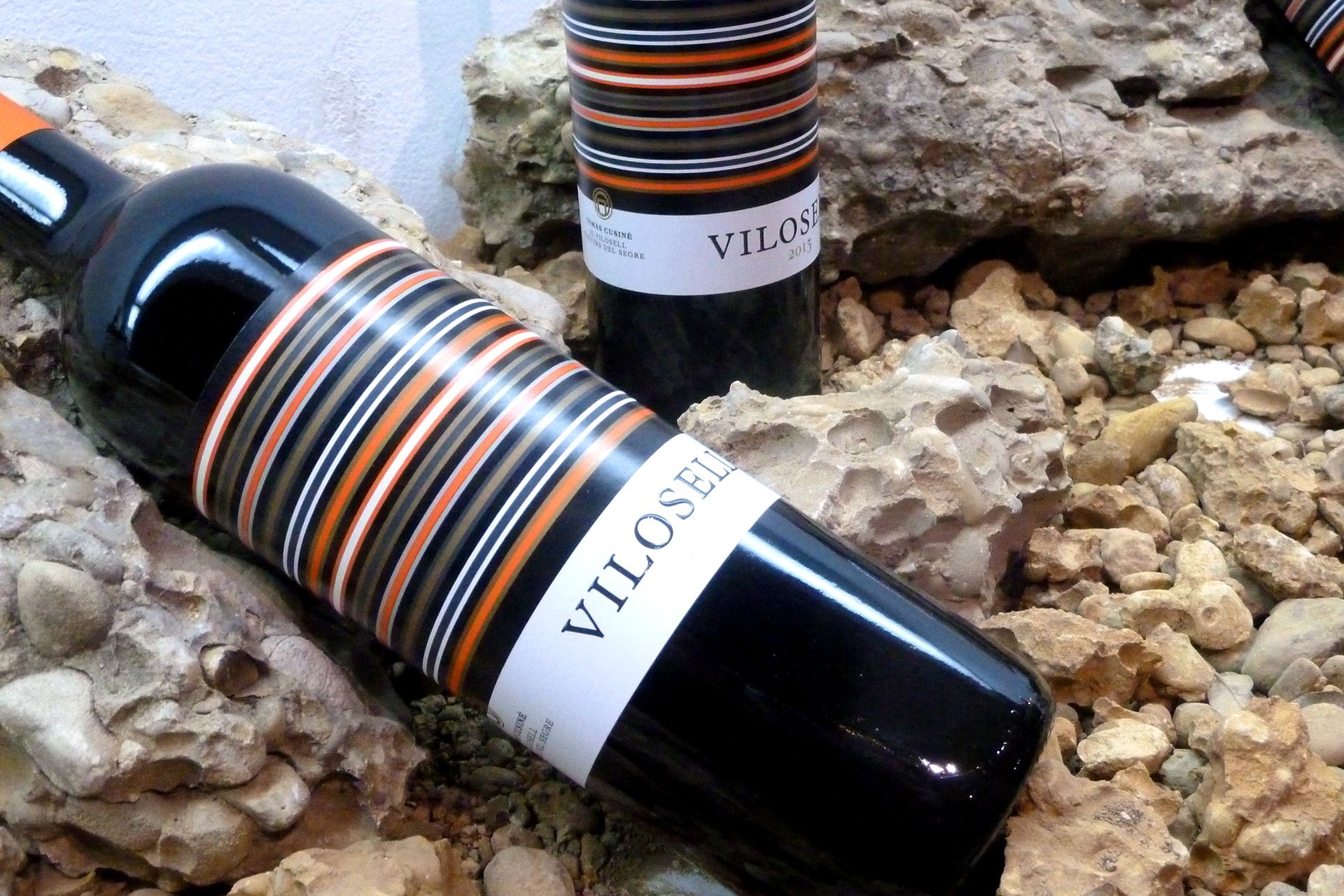
Tomàs Cusiné
After a rather chilly walk around the tranquil, traditional village of El Vilosell, guided by the mayor, we arrived at the Tomàs Cusiné winery housed in the former olive oil cooperative building in the middle of the village. Founded in 2003, its many plots of small vineyards planted between oak forests, pines and juniper bushes were planted with Macabeo (predominantly) and Garnacha. Tomàs Cuisiné Barber, owner and oenologist, now works with 11 varieties, including Müller Thurgau, Sauvignan Blanc, Albariño, Marselan, Carignan. Along the edge of the vineyards, you can also find a path of dry stone huts called ‘Ruta de les Cabanes’, which were used as shelter and for tools. They work organically and will soon be certified as such. Tomàs explained they are working with larger and larger barrels, from 500 to 2000 litres, to diminish the oak influence.
Of course, we also sampled a selection of wines. The Finca 2013, made from old vine Macabeo, had plenty of dried fruit and pear compote, with an exotic touch of pineapple and some white peach. Rich and mellow with a long finish.
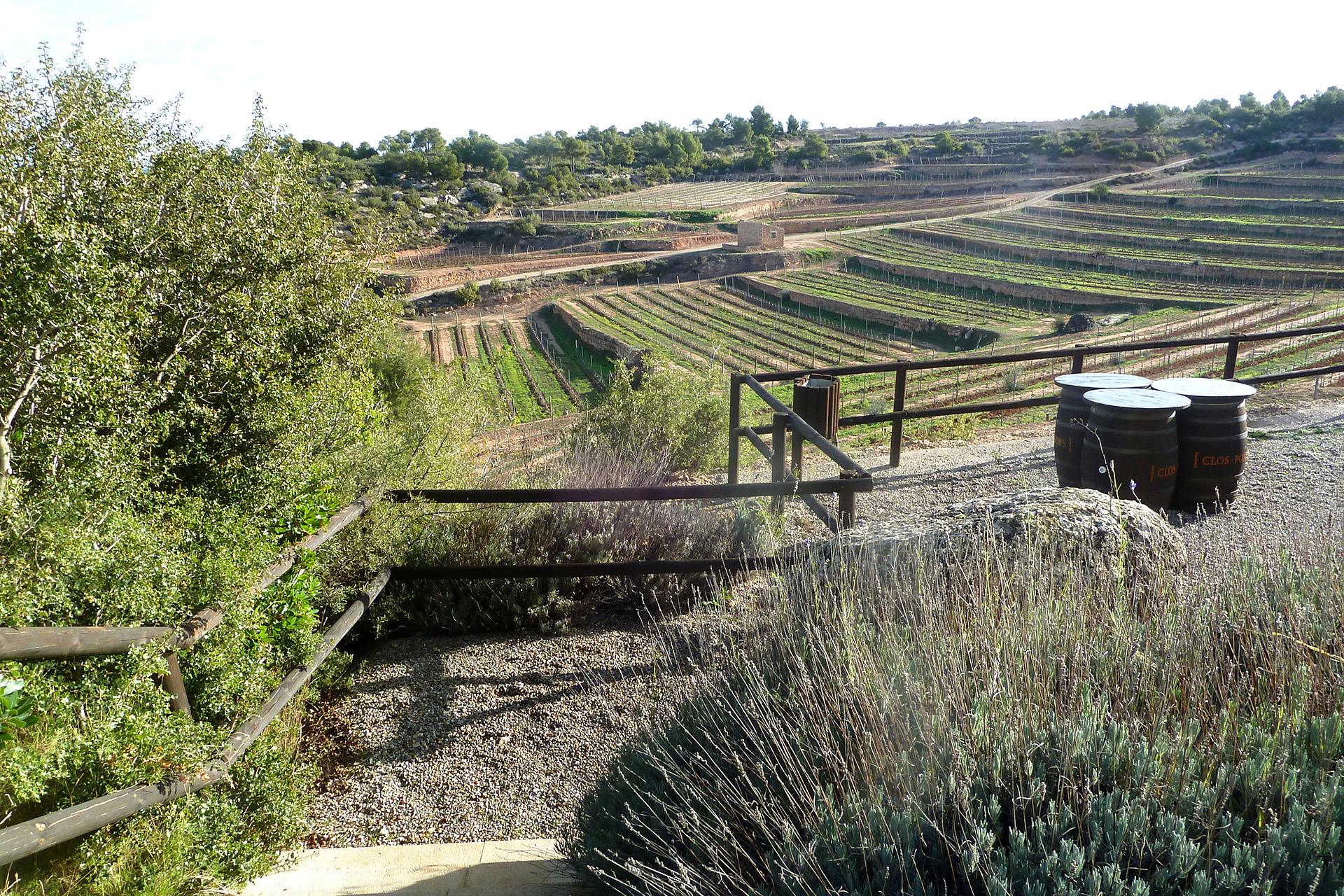
Celler Clos Pons
Clos Pons is located high up with beautiful views over the vast Les Garrigues plateau with its olive groves and rows of terraced vines, with a line of clouds so low on the horizon that it appeared to be the sea. The family business started with olive oil in the 1940s, which they exported Italy; they now export to 140 countries. In 2001, they had 15 days of 1.5m of snow and many olive trees perished, so they decided to replanted 30% as vines and now have 46 hectares of Garnacha, Albariño, Marselan, Macabeo and Syrah. Out of respect for the territory, they kept the terraced landscape typical of the olive trees and so everything is done by hand. The winery is also made from local stone.
They keep 100 bottles of each wine every year in their ‘wine cemetery’, where wines come to die, although they have lived in the meantime, when the oenologist does a vertical tasting here each year. They also keep samples of olive oil here; they have 200 species of olive trees – the biggest olive garden in world – and are investigating what makes the best oil in world. We tasted four of their five wines. Roc de Foc 2012 (Macabeo with 12 months in oak) is a complex wine, smooth and full bodied, with notes of stone fruits, ripe citrus fruits and a floral edge.



